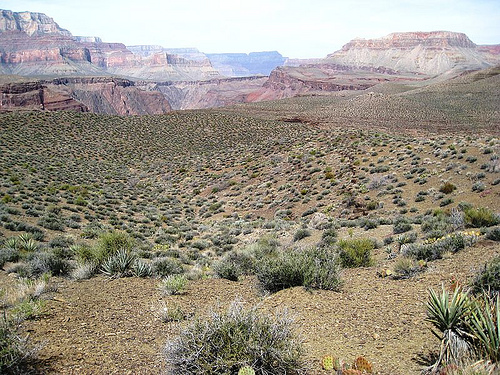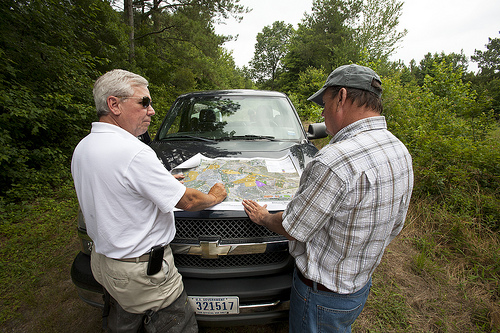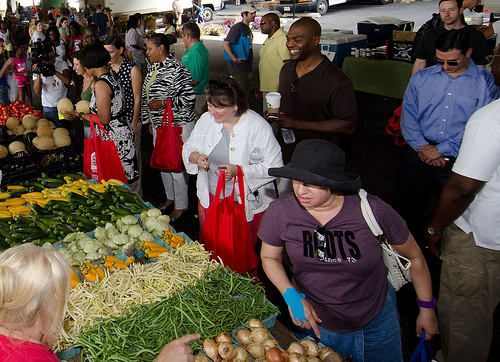
Ready, set, hike! With football season upon us, we want to help you “kick off” your citrus’ health. Whether you are a rookie or seasoned veteran when it comes to growing fruit, following these simple tips can help your citrus have a winning season.
1. Draft an all-pro citrus team
Dwarf varieties are often preferable for backyard growing because they take up less space, do not grow as tall, and are easier and safer to pick. When purchasing citrus trees, buying a healthy tree from a reputable seller is critical. If you are ordering a citrus tree, make sure the nursery or shipper is in compliance with federal quarantine restrictions. Read more »

This solar electric system, funded in part through USDA’s Rural Energy for America Program has reduced a Puerto Rican Paint company’s electric bill from $180,000/year to zero.
On September 13, Master Paints & Chemical Corporation located in the Municipality of Guayanila, Puerto Rico realized their goal when they became independent of the use of fossil fuel sources energy.
Master Paint & Chemical Corp is a local rural paint manufacturer that employs 260 people. This company represents one of the main jobs sources in the municipality. In the past, the cost of electricity totaled more than $180,000 annually. Energy savings in this area became a priority to grantee. With the installation of this system, the company will save 100 percent in yearly energy costs. Read more »

Blackbrush, a species in the Mojave and Great Basin deserts, has adjusted well to climate change, according to genetics research by Forest Service scientists.
Climate change’s threat to forests – specifically to trees – has garnered much attention among people concerned with protecting our environment. Yet, a lack of research on the effects of climate change on grasslands and shrublands is leaving land managers with little information to make decisions on sustaining these vital landscapes so important for recreation, tribal life, crop and livestock production, and native plant and wildlife conservation.
Forest Service researchers point to recent climatic studies in predicting that by the end of the century, 55 percent of future landscapes in the West will likely have climates that are incompatible with the vegetation types that now occur on those landscapes. Read more »

District Conservationist Nelson Brice and Kirby Wells discuss restoration plans for the 1,700 acre easement.
Kirby Wells knew that if he wanted future generations of Wellses to enjoy the family’s land on Maryland’s lower Eastern Shore, something had to change.
The 1,700 acres Wells’ grandfather had purchased in 1941, then drained and planted with loblolly pines was rapidly losing value. In 2006, the family’s sawmill business closed due to the decline of the housing market, and the pressure to sell to developers was on. Read more »

Agriculture Deputy Secretary Kathleen Merrigan (center, white jacket) buys produce at the Baltimore farmers market in Baltimore, MD. By supporting farmers markets and other businesses, Farmers Market Promotion Program funds have helped open new doors for farmers and ranchers all across the country.
Last Friday, I was honored to announce $9 million in new grants through USDA’s Farmers Market Promotion Program (FMPP). The program targets producers, cooperatives and organizations that market products directly to consumers – just one of the many marketing approaches that make American agriculture so successful. Read more »

Soil microbes can be used to trace dust to its source. Soil microbiologist Ann Kennedy checks a computer map that shows the location of various biological groupings across the Columbia Plateau in Washington State.
This post is part of the Science Tuesday feature series on the USDA blog. Check back each week as we showcase stories and news from the USDA’s rich science and research profile.
Even back in the days of Mark Twain’s riveting tales of steamboat pilots and derring-do on the Mississippi River, it was known that you could catch a crook by means of almost invisible clues left at the scene of the crime: the unique patterns of his fingertips. How do we know this? In Twain’s “Life on the Mississippi,” published in 1883, a murderer was identified by his fingerprints. Read more »






